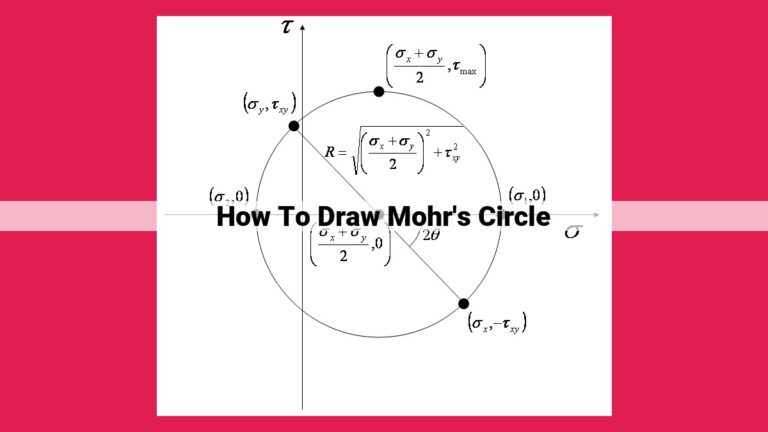Comprehensive Guide To Blocking Magnetic Fields: From Eddy Currents To Superconductors

To block magnetic fields, utilize the principles of eddy currents and Lenz’s law by employing conductive materials that generate opposing magnetic fields. Additionally, diamagnetic materials exhibit innate repulsion to magnetic fields, forming magnetic shields. Lastly, superconductors are exceptional at blocking magnetic fields due to their perfect diamagnetism, making them ideal for high-sensitivity applications like MRI machines and particle accelerators.
Understanding Eddy Currents and Lenz’s Law: A Masterclass in Magnetic Field Shielding
In the realm of electromagnetism, the enigmatic Eddy currents and Lenz’s law play a pivotal role in the art of blocking magnetic fields. These fascinating phenomena, when harnessed effectively, can offer a protective barrier against unwanted magnetic influences. Let’s unravel the secrets of eddy currents and Lenz’s law, exploring their remarkable applications in the realm of magnetic shielding.
Definition and Generation of Eddy Currents
Eddy currents are electrical currents that circulate within the volume of a conductor when it is subjected to a changing magnetic field. These currents arise due to electromagnetic induction, where the fluctuating magnetic field generates an electromotive force (EMF) that drives the current flow.
The direction of eddy currents is governed by Lenz’s law, which states that the induced EMF opposes the change in magnetic flux through the conductor. In other words, the eddy currents create a magnetic field that counteracts the external magnetic field, effectively shielding the conductor from its influence.
Lenz’s Law and Its Impact on Magnetic Field Blocking
Lenz’s law plays a crucial role in the ability of eddy currents to block magnetic fields. By generating an opposing magnetic field, eddy currents effectively reduce the magnetic flux within the conductor. This shielding effect is particularly pronounced in thick conductors, where the eddy currents have more time to develop and counteract the external field.
Applications of Eddy Currents in Blocking Magnetic Fields
The interplay between eddy currents and Lenz’s law finds practical applications in various fields, including:
-
Magnetic shielding: Eddy currents are used to protect sensitive electronic devices from harmful magnetic fields. By encasing the devices within a thick conductive material, eddy currents effectively shield them from external magnetic influences.
-
Induction heating: Eddy currents are utilized in induction heating systems, where alternating magnetic fields induce currents within the material being heated. This non-contact heating method is commonly used in industrial applications.
-
Magnetic brakes: Eddy currents are employed in magnetic brakes, which rely on the opposing magnetic field generated by eddy currents to resist motion and provide a braking force.
Understanding the principles of eddy currents and Lenz’s law is essential for designing effective magnetic shielding solutions. By leveraging these phenomena, engineers and scientists can create protective barriers against magnetic fields, safeguarding sensitive equipment and enhancing system performance.
Diamagnetism and Magnetic Shielding: Unraveling the Power of Repulsion
Understanding Diamagnetism
Diamagnetism is a fascinating phenomenon that arises when certain materials are exposed to magnetic fields. Unlike paramagnetic substances that align themselves with the field, diamagnetic materials possess an opposite behavior. They repel the magnetic field, creating a region of weakened magnetism around them. This unique property stems from a specific arrangement of electrons within the material’s atoms.
Exploiting Diamagnetism for Shielding
The repulsive force generated by diamagnetic materials can be harnessed for magnetic shielding. By surrounding sensitive equipment or biological samples with these materials, we can negate the effects of external magnetic fields. This has profound applications in medical imaging, such as magnetic resonance imaging (MRI), where it helps minimize image distortion caused by magnetic interference.
Materials and Limitations
Various materials exhibit diamagnetic properties, including carbon, water, and graphite. However, the strength of this effect varies significantly, affecting the materials’ shielding capabilities. Diamagnetic materials can provide decent shielding for weak magnetic fields, but their effectiveness against strong fields is limited. Additionally, the materials’ bulkiness and low temperature requirements can pose practical challenges in certain applications.
Applications and Ongoing Research
Despite these limitations, diamagnetic shielding remains a valuable tool in a range of fields. It finds use in protecting electronics from magnetic interference, shielding biological samples during scientific experiments, and even reducing the effects of geomagnetic disturbances on sensitive equipment. Active research into improving the strength and practicality of diamagnetic shielding materials promises to expand its applications even further in the future.
Superconductivity and Magnetic Shielding
In the realm of magnetism, the quest for shielding sensitive devices and materials from magnetic fields has led to the discovery of extraordinary materials: superconductors. These remarkable substances exhibit unique properties that allow them to repel magnetic fields, creating a protective shield against external magnetic influences.
Perfect Diamagnetism in Superconductors:
Superconductivity is the ability of certain materials to conduct electricity without any resistance below a critical temperature. This remarkable characteristic arises from the formation of electron pairs known asCooper pairs, which flow through the material without losing energy. When a superconductor is exposed to a magnetic field, the Cooper pairs create a countervailing magnetic field that exactly cancels out the external field. This phenomenon is known as perfect diamagnetism.
Applications of Superconductors in Magnetic Shielding:
The perfect diamagnetic properties of superconductors make them ideal for shielding sensitive devices and materials from magnetic interference. Superconducting shields are used in various applications, including:
- Magnetic Resonance Imaging (MRI): Superconducting magnets create the strong magnetic fields used in MRI scanners. The superconducting shields protect the sensitive electronics and patients from stray magnetic fields.
- Particle Accelerators: Superconducting magnets are used to steer and focus charged particles in particle accelerators. The superconducting shields prevent external magnetic fields from interfering with the particle beams.
- Quantum Computing: Superconducting circuits are used to create quantum processors. The superconducting shields protect the delicate quantum states from magnetic noise.
Challenges and Ongoing Developments:
Despite their remarkable properties, superconducting shields face some challenges. The primary limitation is the need for extremely low temperatures to maintain superconductivity. This requires the use of specialized cooling systems, which can be expensive and complex. Ongoing research is focused on developing superconducting materials that operate at higher temperatures, reducing the need for expensive cooling systems.
In conclusion, superconductors offer a powerful tool for magnetic shielding. Their ability to generate a perfect diamagnetic field provides unparalleled protection for sensitive devices and materials from external magnetic interference. As research continues to advance, superconducting shielding is expected to find even wider applications in fields such as medical imaging, scientific research, and quantum computing.





